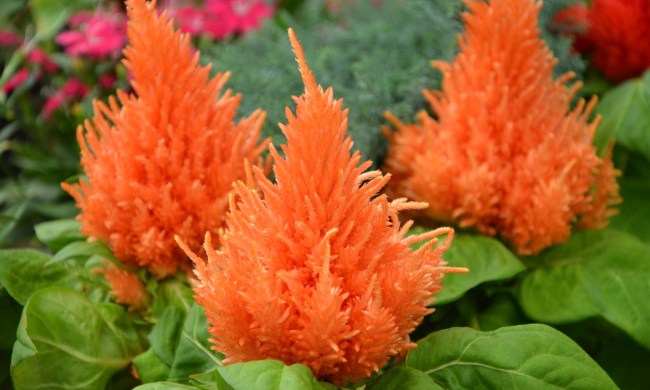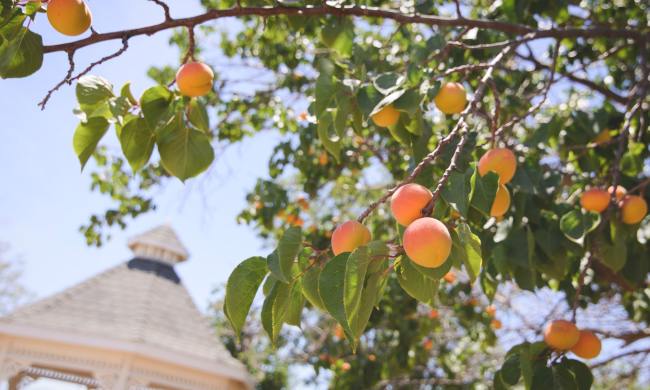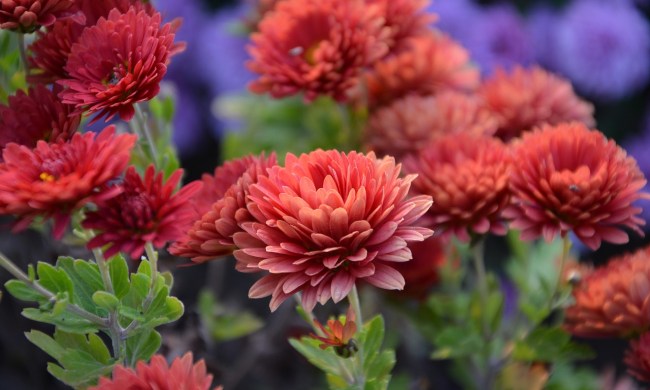Herbs are fun to grow and useful to have around, both for flavoring meals and for keeping certain pests away. Basil is one of the most popular herbs, and for good reason. This tasty herb is versatile and easy to grow, both indoors and out. Did you know there’s more than just one type of basil? If you’re planning your next herb garden, here are six types of basil you should consider including to add a little variety to your garden.
Sweet basil

Sweet basil, also called genovese basil, is the most common type of basil, but there’s a reason it’s the classic. Reliable and delicious, sweet basil gives you the basil flavor and look that you’re familiar with. If you’ve grown basil before, it was likely sweet basil. Place your sweet basil in full sun, with some light afternoon shade if it’s outdoors. Water it regularly to keep the plant fresh and healthy, and you can begin harvesting leaves in just a few weeks, as soon as the plant has four sets of leaves. Be sure to leave a few leaves on the plant so it can continue to grow.
Thai lemon basil

Thai lemon basil, sometimes called lemon basil, lao basil, or hoary basil, is true to its name. It has a citrus kick to it, both in scent and in flavor, and it is an important ingredient in many dishes from Thailand and other parts of Southeast Asia. Despite its different flavor, caring for lemon basil is no different than caring for sweet basil. Place it in full sun, water it regularly, and keep it warm. Once the plant has four sets of leaves, you can begin harvesting. As with other basil types, avoid harvesting Thai lemon basil while it’s flowering. You can remove the flowers if you prefer or keep them and let them produce seeds.
Holy basil

Holy basil, also called tulsi, has a distinct flavor and is common for use in Indian food. The flavor is typically described as a bit like licorice, with hints of pepper and mint. Holy basil is also used as a medicinal herb. With smaller leaves and a more intense flavor, holy basil stands out among other types of basil. If you enjoy the flavor, there’s really no substitute. Luckily, holy basil is easy to grow. Like other types of basil, place it in full sun, water it regularly, keep it warm, and begin harvesting it after it has a few sets of leaves.
Dark opal basil

If you love the taste of basil but wish it looked a little more dramatic, dark opal basil is the variety for you. It has a mild flavor and is slightly earthy, but more often than not, it’s grown for its appearance. Dark opal basil is a deep purple color, sometimes with slight variegation, and large leaves that are slightly ruffled or crimped at the edges. Whether you want to grow it as an herb or an ornamental plant, care for your dark opal basil the same way you would other types of basil. Plant it in full sun, water it regularly, harvest only after the plant has a few sets of leaves, and keep it warm.
Ruffles basil

There are two types of ruffles basil, and both are great for flavoring, garnishes, and ornamental plants. Both green and purple ruffles basil have large, ruffled or crimped leaves that look a little like lettuce leaves. The flavor is strong and a little tangy, and the leaves can be ground in meals or whole for visual appeal. Ruffles basil is also typically a bit bigger than other types of basil, thanks in part to the larger leaf size. However, caring for ruffles basil is the same as caring for other types of basil, so there’s no need to worry about putting in extra effort for these plants.
Mammoth basil

True to its name, mammoth basil is easy to recognize by its large leaves. With leaves that can grow to be as large as your hand and a flavor to match, this basil grows primarily for eating. While the large leaves do make it generally attractive as an ornamental plant, the main appeal is that there is more flavor and more leaf to go around. Care for your mammoth basil the same way you would other types of basil by planting it in full sun and watering it regularly. Due to the larger leaves, you may not need to harvest it as frequently.
Basil is a delicious herb with many uses, and now you have more new basil varieties to try out. No matter what type of cuisine or garden aesthetic you prefer, one of these six types of basil is sure to satisfy you. Basil is easy to grow and propagate, even in a small space, so don’t let anything stop you from growing as much basil as you want.




